Discover which RC model suits your needs
The popularity of flying radio-controlled airplanes has been enjoying an explosive growth for all ages and genders!
With the advances and availability of inexpensive advanced microelectronics and high-quality RTF (ready to fly) and ARF (almost ready to fly) airplanes. Now just about everyone can easily and inexpensively enjoy flying radio-controlled airplanes.
Whether you would like to fly in your own living room, backyard, local park or at a local flying club. There are many types of planes to choose from now – anyone with an interest in flying rc can choose a plane that will be thrilling and more than a pleasure to fly!
Prices
Prices range from the very inexpensive to the very expensive (mortgage the house). There are radio-controlled airplanes for the beginner or novice flyer all the way up to advanced airplanes that require a great deal of time, experience, and commitment to remain proficient.
You can find tiny 3 and 4-channel fully aerobatic airplanes that weigh in at less than an ounce to giant-scale jet airplanes that are so large and heavy that they require FAA approval before they can be flown.
Regardless of the type of plane you choose, you will be able to find not only a type of plane to fit your needs – but probably several types that will give you an incredible amount of pride and pleasure to fly.
Careful here, RC flying like piloting a real plane can easily become habit-forming! (I’m speaking from experience!)
Power choices
Your choices continue – you can choose between Gas – Nitro(glow) or Electric or both. While there are other types of power available for radio-controlled airplanes like jet turbines, pulse jets, or even a few solid or liquid-fueled rocket-powered radio-controlled airplanes. The time, complexity, and expense of these planes generally place them well out of reach of the average modeler!
Here’s a quick reference to how RC airplane kits are generally supplied.
- RTF RC Airplanes – RTF or “Ready to Fly” RC planes are in my opinion one of the best and easiest ways to get started in radio control flying. Simply put, this type of plane is ready with very minimal – if any assembly. Usually, just charge the batteries and go fly. You do not have to be a model builder or spend time constructing a kit.
- ARF RC Airplanes– ARF or “Almost Ready to Fly” These are a good way to be introduced to flying RC while learning the joys and challenges of building your own plane. An ARF can be purchased as an electric or gas-powered RC plane.
- Plug-N-Play (PNP) RC airplanes– an airplane that is between an RTF and ARF, P-N-P’s solve several issues. For those that are comfortable with and prefer using their own radio system, Plug-N-Play is ideal. Generally, all you will need to provide is your own radio system receiver. Simply plug in your receiver, set up your radio, and go fly. Going this route can also save on the price.
- Bind-N-Fly (BNF) RC aircraft – a Bind-N-Fly is basically an RTF airplane without the transmitter. You will need to have a compatible radio transmitter able to “Bind” with the supplied receiver. Bind-N-Fly is a registered trademark of Horizon Hobby.
- ARC (Almost Ready to Cover) – An ARC is much more involved, but gives the flyer more avenues. Normally the major assembly is already complete – all that is required is final assembly and your choice of covering materials.
- ARFC (Almost Ready For Combat) – Basically an ARF airplane designed for park or field combat fun flights.
RC Flying made easy – a perfect starting place for the novice!
Just a note: RC Flying can be habit-forming – especially when you experience the thrill of a screaming high-speed pass followed by an out-of-site vertical climb, enjoying some 3D aerobatics, or flying a beautiful scale warbird!
RC Flying may be(is) habit-forming; you may (probably will) get hooked!
 RC flying is a thrilling high-tech sport that is really “taking off”(excuse the pun). For both men and women of all ages and a great way of experiencing the challenge of flight – safely! It is also a great way of making and enjoying new friends and activities from all over the world.
RC flying is a thrilling high-tech sport that is really “taking off”(excuse the pun). For both men and women of all ages and a great way of experiencing the challenge of flight – safely! It is also a great way of making and enjoying new friends and activities from all over the world.
You find yourself on this page because you or someone you know has decided to get into RC flying! Maybe you’ve seen some ads with fantastic-looking RC airplanes or RC helicopters. And now you would love to learn to fly them also, how hard could it be?
Now you’ve decided – you’re ready to take the next big step, choosing and purchasing an RC airplane or RC helicopter.
Well, I know this will be hard, so if you have not already purchased an airplane or helicopter.
Wait!
Keep the money in your pocket for now. Become better informed. Read the rest of this guide, do research and talk to other RC flyers locally before buying your first RC model airplane or helicopter.
You’ll be better informed, save time and money and you’ll not only learn how to fly, but how to be an accomplished RC flyer with a great deal less aggravation and frustration to deal with.
Common Questions!
Startup costs for a beginner RC?
Truly the range is staggering; you can start for as little as $70 and up. It depends on the commitment and your budget. Normally a range from a little under $100 to $350 is typical to get started with a complete beginner RC airplane or helicopter setup, not the remote-controlled toys found at large box stores.
How far away can they fly?
 Today’s radio systems can easily have a range of about a mile. But remember, to remain in control, your model needs to be close enough for you to be able to see what it’s doing. A plane with a 40-inch wingspan can become very difficult to follow a hundred feet away.
Today’s radio systems can easily have a range of about a mile. But remember, to remain in control, your model needs to be close enough for you to be able to see what it’s doing. A plane with a 40-inch wingspan can become very difficult to follow a hundred feet away.
How fast can they fly?
Depending on the type of airplane or helicopter – beginner RC airplanes, park flyers, and backyard flyers can average from 15 to 35 mph and can land at much slower speeds of around 10 – 15mph.

There are also models that can reach speeds well over 150 mph. These have no place at a park and should be flown only at a designated flying field.
What happens when the battery runs out of charge?
If flying an electric airplane or helicopter the electronics of a properly setup RC model should never allow the batteries to run completely out of charge. Discharging batteries below recommended levels will damage them. Usually, your model will go to a lower power setting or to idle while still supplying power to the receiver and servos so you remain in control, best to go ahead and land, taking a short walk to retrieve your plane and saving the batteries is well worth it.
What kind of radio and what’s a channel? More on radio systems
Today’s modern radio system can make flying easier for beginners and experts alike. Whenever you’re considering a system you’ll see a number of channels; 2 channels, 3 channels Etc . . . .
 A single channel controls one function of flight on your plane.
A single channel controls one function of flight on your plane.- A very simple 2 channels will control the throttle and rudder.
- 3 channels control the throttle, rudder, and elevator.
- 4 channels are considered a full system with the addition of ailerons.
Both 2 channels and 3 channels are used when first learning to fly. Starting with a 3 channel that can make your transition to full control easier. Often your receiver system can be moved from one plane to the next as you progress and you may have several receivers working with the same transmitter.
If you are committed to flying RC you may consider starting with a 4-channel radio system but begin by installing it in a 2 or 3-channel beginner RC airplane. You’ll just have to add an additional servo when you’re ready to move up to all 4 channels, instead of purchasing a new radio.
There are so many different beginner RC airplane ads that all say they are trainers, how can I tell what’s the best beginner RC plane for me?
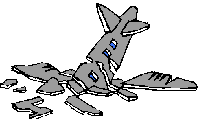
RC model airplane ads can and often do extol the ruggedness and ease of flight of their models. Here are just a few guidelines to look out for.
- If the ad says “Crash-Proof”. Believe me “There is no such thing as a crash-proof airplane.”
- There are planes made from materials that can withstand a great deal of abuse and still be flyable after repairs, but they can still suffer serious damage.
- If the ad says “Easy to Fly” or “Great for beginners” . . . well maybe. We’ll cover the best design types for a beginner in the next section.
Ultimately how well it flies will be up to you. If you’ve built straight and within the weight outlined, the controls connected properly, and the CG or Center of Gravity located where it should be – will be a much better flier, regardless of whether you’re a novice or an expert.
Beginner RC trainers don’t look as nice as I would like my first to look like. Is it that much harder to learn to fly a sport or scale RC model?
If you have your eye on a very sleek slightly more expensive model that you just have to have, and you want to start off with that beauty. Sorry to say, it will probably not be a beauty for very long.
I’m not sure who is responsible, the “Universe”, “Karma”, “Gaia” or maybe “Mother Nature” but it seems that someone pre-ordains that almost every beginner RC vehicle must be sacrificed by repeated impacts into various solid objects, the ground, trees, buildings, etc…
Just letting you know it can happen, so be prepared. It’s best to learn to fly with a trainer, you will learn easier and enjoy it much more. Then you can get that beauty that will last for years
Now I’ve got some Questions for You!
- Where are you going to fly?
- How big of an area compared to a baseball diamond?
- Is it grass or solid?
- Do you have permission to fly there? If you plan to fly at a park, in a small backyard, or indoors, you’ll need to consider an RC plane best suited to fly in those spaces.
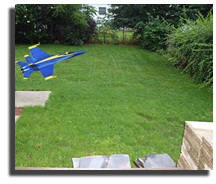 There are many different designs available.
There are many different designs available.
An obvious example of the wrong choice would be a parkjet if you are planning on flying in a small backyard. Parkjets can fly very fast and will have a short and certainly exciting end in a small area or backyard.
The next section of the guide will show you what to look for and how to spot a stable forgiving airplane design that you’ll have fun learning to fly.
Just a Reminder: Beginner RC airplanes are not toys; they are real flying vehicles that do not play well with other objects like the ground, people, cars, trees, and buildings. They may be small, but they can certainly cause damage.

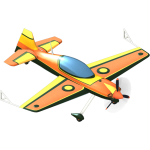
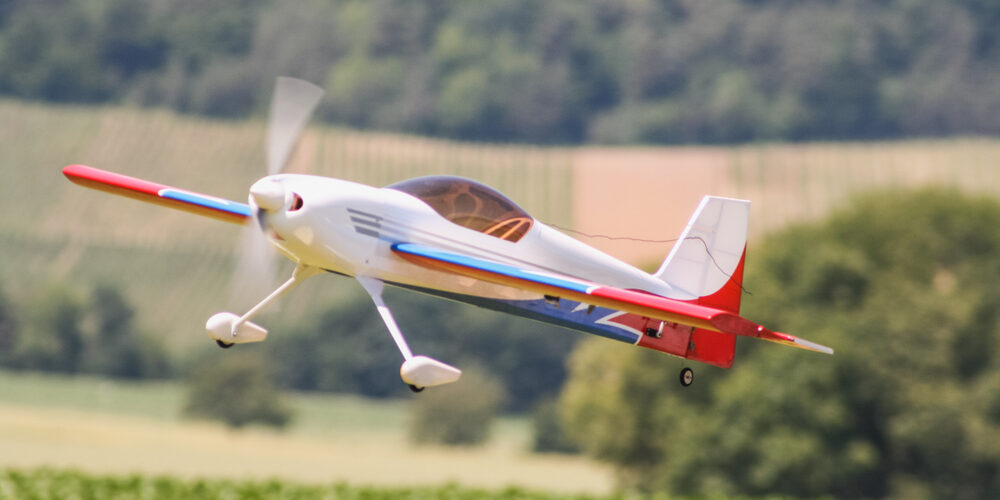
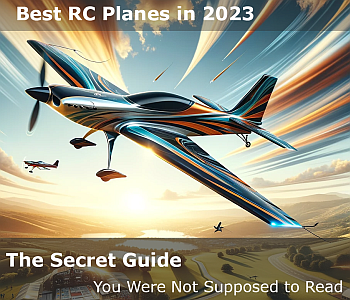
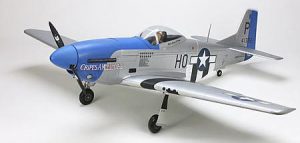
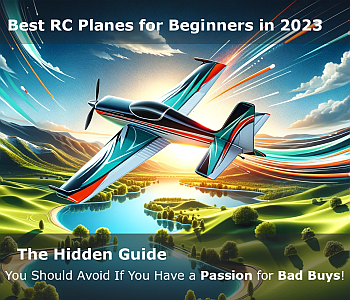
 A single channel controls one function of flight on your plane.
A single channel controls one function of flight on your plane.